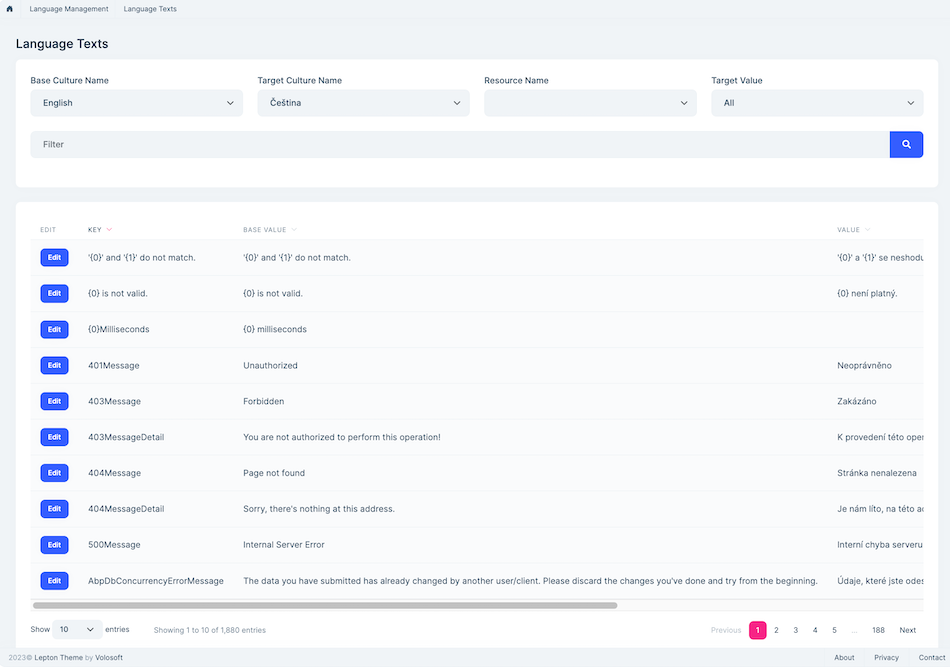Microservice Solution: Localization System
The Administration microservice is responsible for managing localization. It is used by all the services and applications in the solution. This document explains how localization works in the microservice solution. When we send a request to /api/abp/application-localization, the gateway application forwards the request to the Administration microservice. The Administration microservice returns the application localization, which includes the localization resources of the solution. You can see the details of the application localization endpoint.
Like the other fundamental feature modules (Permission Management, Feature Management), each microservice depends on the Volo.Abp.LanguageManagement.EntityFrameworkCore or Volo.Abp.LanguageManagement.MongoDB package. These modules provide the necessary infrastructure (such as IExternalLocalizationStore) to access all localization. Additionally, the Administration microservice might depend on the Volo.Abp.LanguageManagement.Application and Volo.Abp.LanguageManagement.HttpApi packages to manage localization if you check the Language Management module while creating the solution.
Language Management
The Administration microservice provides a set of APIs to manage localization. The localization resources are defined in each microservice, and when a microservice starts, it registers its localization resources to the related localization tables automatically. After that, you can see the localization resources from the language texts and manage them.
The Language Management module is optional. If you don't need to manage localization resources from the UI, you can uncheck the Language Management module while creating the solution. However, each microservice's localization resources are still registered to the database and can be used by the applications.
Creating a New Localization Resource
To create a new localization resource, you can create a class named MicroservicenameResource in the Contracts project for the related microservice, which is already created by the solution template. For example, the Identity microservice has an IdentityServiceResource class and localization JSON files.
[LocalizationResourceName("IdentityService")]
public class IdentityServiceResource
{
}
Additionally, it configures the localization resource in the IdentityServiceContractsModule class.
public override void ConfigureServices(ServiceConfigurationContext context)
{
Configure<AbpVirtualFileSystemOptions>(options =>
{
options.FileSets.AddEmbedded<BookstoreIdentityServiceContractsModule>();
});
Configure<AbpLocalizationOptions>(options =>
{
options.Resources
.Add<IdentityServiceResource>("en")
.AddBaseTypes(typeof(AbpValidationResource), typeof(AbpUiResource))
.AddVirtualJson("/Localization/IdentityService");
});
Configure<AbpExceptionLocalizationOptions>(options =>
{
options.MapCodeNamespace("IdentityService", typeof(IdentityServiceResource));
});
}
Existing microservices in the solution don't contain the localization text. These localization resources are defined in their own modules. You can add new localization resources to the existing microservices by following the steps above.



